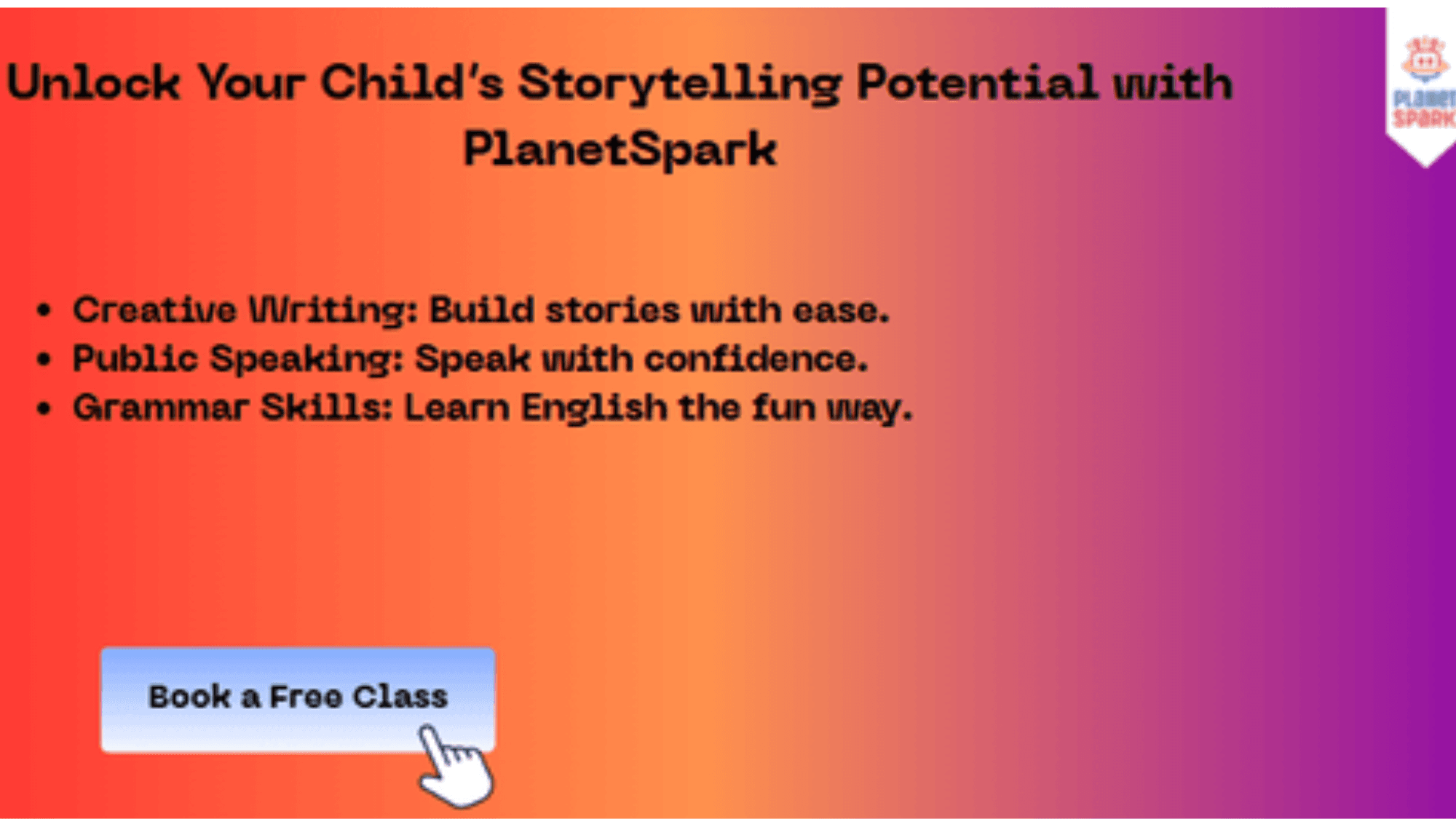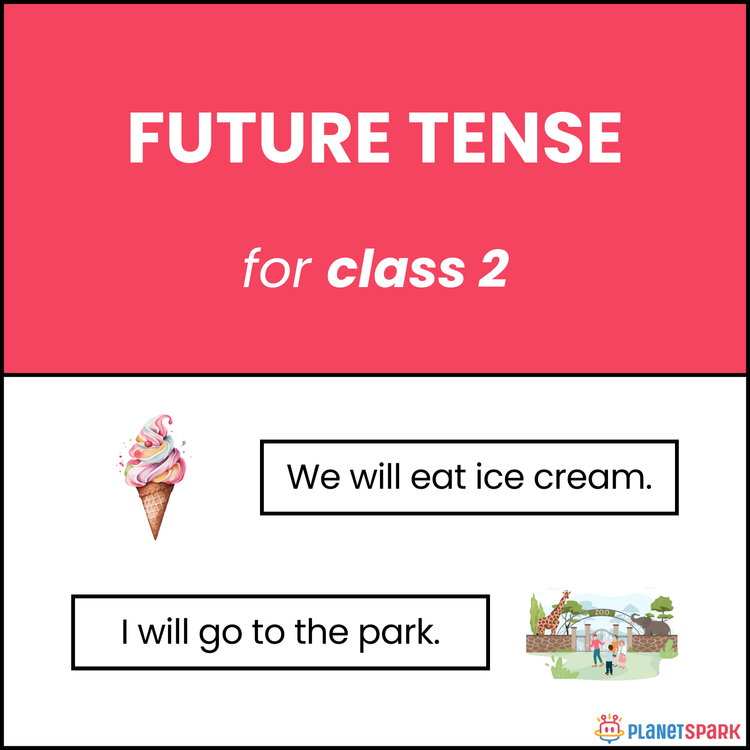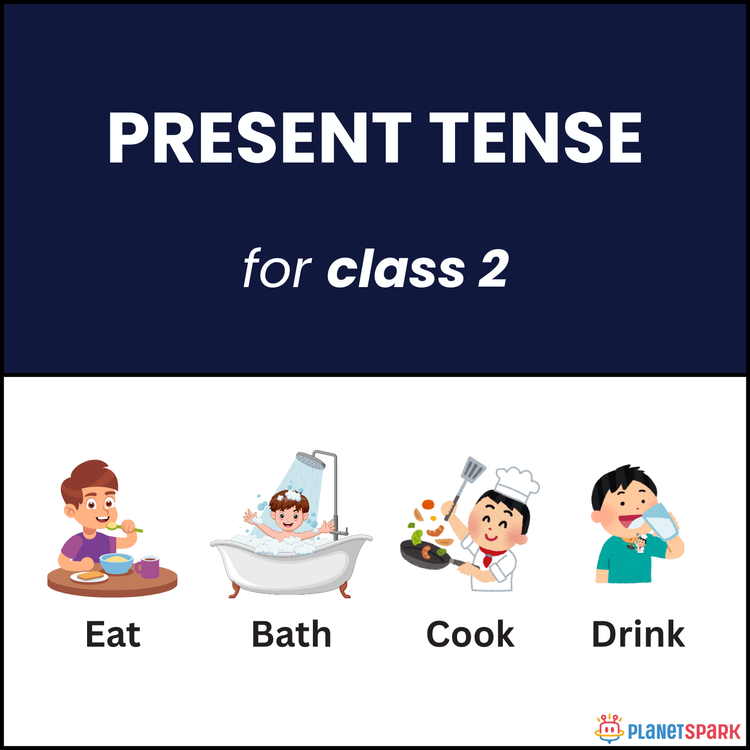Your Guide to the 12 Basic English Tenses

Table of Contents
- The 12 Basic English Tenses Explained
- Why are Tenses in English Grammar So Important?
- Summarising the 12 English Verb Tenses
- Common Mistakes and Confusions in Tenses in English
- Transform Your Understanding of English Grammar Tenses with
- Why Choose PlanetSpark to Master The 12 Basic English Tenses
- Practical Application of The 12 Tenses in the English Langua
- Conclusion
The English language is dynamic, and its verb system is essential for placing actions in time - whether they happened in the past, are happening now, or will happen in the future. This guide will help you navigate English tenses, breaking down their structures with clear examples. Welcome to the definitive guide on the 12 basic English Tenses.
If you’ve struggled to differentiate between the Simple Past and Present Perfect, this article is for you. We’ll cover all 12 English tenses, ensuring you understand their usage in real conversations and writing. Our goal is to help you master English tenses for clearer and more compelling communication.
The 12 Basic English Tenses Explained
English has three primary time periods: Past, Present, and Future. Within each time period, there are four aspects: Simple, Continuous (or Progressive), Perfect, and Perfect Continuous (or Perfect Progressive).
The combination of these three time periods and four aspects gives us the total of 12 basic English tenses. Understanding the pattern makes learning them infinitely easier

The name of the 12 tenses in English grammar is simply the combination of the time and the aspect, making the structure very logical. Let's explore each of the 12 tenses one by one with detailed structures and examples.
I. The Present Tenses (Actions in the Now)
The Present Tense category is used for actions happening now, routine activities, facts, and scheduled events.
1. Present Simple
Key Takeaway: This is the most fundamental of the 12 tenses in english language, used for everything that is generally or consistently true.
2. Present Continuous (or Progressive)
Key Takeaway: Use the continuous form to stress that an action is incomplete and ongoing at the moment of speaking or a temporary period around it.
3. Present Perfect
Key Takeaway: The focus is on the connection between the past action and the present time. The "when" is often unspecified or "up to now."
4. Present Perfect Continuous (or Progressive)
Key Takeaway: This tense emphasises the "duration" of an activity that began in the past and has not yet stopped, or just stopped with visible present results.
II. The Past Tenses (Actions that are Finished)
The Past Tense category is used to describe actions, events, or states that occurred at a specific time before the present.
5. Past Simple
Key Takeaway: This is the most common past tense, used for single, finished actions, often accompanied by a time marker (yesterday, last year, five minutes ago).
6. Past Continuous (or Progressive)
Key Takeaway: It sets the scene for a narrative or describes a background activity that was in progress.
7. Past Perfect
Key Takeaway: This is the "past of the past," necessary for clearly sequencing two past events.
8. Past Perfect Continuous (or Progressive)
Key Takeaway: It emphasises the "duration" of a past action that was immediately relevant to a later past event.
Make your children understand and learn English Grammar today. Book a free class today!
III. The Future Tenses (Actions Yet to Happen)
The Future Tense category is used to express actions or states that will occur after the present time.
9. Future Simple
Key Takeaway: Used for general future statements or instantaneous choices. (Note: “Going to” is often used for plans made before the moment of speaking.)
10. Future Continuous (or Progressive)
Key Takeaway: It projects a continuous action into the future.
11. Future Perfect
Key Takeaway: This tense looks back from a future point and confirms that an action will be completed by then.
12. Future Perfect Continuous (or Progressive)
Key Takeaway: This is the least commonly used tense, but it is vital for emphasising the length of time an activity will have been in progress leading up to a future milestone.

Why are Tenses in English Grammar So Important?
The verb tense is the heart of a sentence. It’s what communicates the time and state of an action or event. Without accurate tense usage, misunderstandings are inevitable.
Imagine saying, "I will eat dinner yesterday," or "She walked to school right now." These errors immediately confuse the listener. Tenses provide the necessary time-frame context, enabling smooth, logical, and accurate exchange of ideas.
Mastering tenses in English grammar allows you to:
1. Communicate Clearly: Ensure your listeners or readers know exactly "when" an action took place.
2. Narrate Effectively: Tell stories, recount history, or explain future plans with perfect chronological flow.
3. Achieve Grammatical Accuracy: Pass exams, write professional documents, and speak confidently, knowing your structure is correct.
Let’s begin our deep dive into the foundational structure that supports almost every sentence you will ever speak or write.
Summarising the 12 English Verb Tenses
To make you understand the 12 forms of English tenses, here is a quick summary table with a common verb, 'to learn', used across all 12 tenses in English grammar, with examples.
Common Mistakes and Confusions in Tenses in English
While understanding the structure of what are the 12 tenses in English is important, applying them correctly is where most students falter. Here are the most common areas of confusion:
1. Simple Past vs. Present Perfect
- Simple Past: Used for actions completed at a “specific” past time. (e.g., I visited my grandma yesterday.)
- Present Perfect: Used for actions completed at an “unspecified” time, or actions continuing to the present (e.g., I have visited my grandma many times, or I have lived here since 2010).
2. Past Simple vs. Past Continuous
- Past Simple: The shorter, interrupting action. (e.g., The lights went out.)
- Past Continuous: The longer, background action that was in progress (e.g., I was cooking dinner when the lights went out).
3. Past Perfect vs. Simple Past
- Past Perfect: The action that happened “first” among two past events. (e.g., I couldn't enter because I had forgotten my keys. - Forgetting happened before the inability to enter.)
- Simple Past: The action that happened *second*. (e.g., I couldn't enter the house.)
Mastering these subtle differences will significantly improve your fluency and accuracy in using the 12 tenses.
"Strong grammar is the foundation of clear communication."
Help your child build it right with PlanetSpark
Transform Your Understanding of English Grammar Tenses with PlanetSpark
At PlanetSpark, we believe that true mastery of tenses in English grammar moves beyond rote memorisation. It requires practice, context, and personalised feedback. Our dedicated English grammar programs are designed to transform your child's approach to learning, making it engaging, fun, and highly effective.
Explore the best learning methods with Planetspark, explained below:
Interactive Grammar Learning - No Rote Learning
Grammar is taught through stories, dialogues, role plays, and error correction instead of rule memorisation. We focus on natural language acquisition, ensuring the rules of the 12 tenses are intuitive, not just recalled.
Gamified Learning Tools
Students learn grammar through fun quizzes, word puzzles, and engaging, gamified exercises. This approach ensures high engagement and makes mastering complex rules (like when to use the Past Perfect vs. Simple Past) feel like a fun challenge.
Integrated Writing Practice
Each grammar topic is followed by sentence-building and writing tasks to reinforce practical application. Your child immediately uses the newly learned English tenses in context, solidifying the learning.
Grammar Proficiency Levels
Students progress from basics (nouns, verbs, punctuation) to advanced topics (conditionals, passive voice, reported speech) with clear milestones. This ensures a systematic and thorough understanding of the entire grammar spectrum, including advanced usage of the 12 English Grammar Tenses.
Parent Reports on Grammar Skillsets
Reports track improvement in:
- Writing fluency
- Sentence structure and complexity
- Grammatical accuracy
- Logical flow and content structure
- Critical thinking and creativity
- Confidence, voice modulation, and delivery
- Body language and syntax
These detailed reports provide a clear, measurable view of how your child is progressing in their mastery of grammar and communication.
Why Choose PlanetSpark to Master The 12 Basic English Tenses?
Our program structure is built around personalised attention and cutting-edge technology to deliver superior learning outcomes, especially for a complex topic like tenses in English grammar with examples.
Product Features: The PlanetSpark Advantage
1. 1:1 Personal Trainers for Every Child
Every student at PlanetSpark is matched with a certified communication expert who delivers fully personalised, one-on-one live classes. These trainers:
- Understand your child’s learning style, pace, and personality
- Provide immediate feedback and guidance during sessions
- Focus on building skills like fluency, storytelling, public speaking, grammar, and creative writing
This individual attention ensures deeper engagement, faster improvement, and a strong mentor-child connection that motivates consistent learning and helps them tackle the subtleties of the 12 basic English tenses.
2. Personalised Curriculum and Learning Roadmap
No two children are the same, and neither are their learning paths. We begin with a thorough assessment of your child’s current skills and design a customised learning roadmap that:
- Pinpoints gaps in grammar, vocabulary, fluency, confidence, and content structuring
- Focuses on gradual development across levels, from sentence formation to public speaking excellence
- Is regularly updated based on your child’s progress, new milestones, and feedback from the trainer
This ensures your child always moves forward in the most meaningful direction, specifically addressing their weaknesses in areas like English tenses.
3. SparkX – AI-Enabled Video Analysis Tool
With SparkX, children record and upload their speeches, storytelling attempts, or presentations. The video is then analysed using AI that evaluates:
- Voice clarity and modulation
- Body language and posture
- Sentence structure and grammar usage
- Confidence level and stage presence
- Organisation and flow of ideas
You receive a detailed, easy-to-understand performance report that highlights strengths and areas of improvement. This tech-enabled feedback ensures measurable progress and faster skill development in areas like accurate English grammar tenses usage.
4. AI-Led Practice Sessions for Speech and Storytelling
In addition to live classes, PlanetSpark offers AI-led learning sessions where students practise independently with a virtual AI coach. The AI simulates real-time speaking activities such as:
- Delivering speeches or narrating stories
- Responding to prompts in structured formats
- Receiving instant feedback on voice, fluency, grammar, and pacing
These sessions help reinforce learning outside of class hours and make practice consistent, engaging, and highly personalised, perfect for solidifying knowledge of the 12 English Verb tenses.
5. Spark Diary – Nurturing Writing Habits Digitally
Spark Diary is your child’s personal digital journal integrated into our platform. Kids use it to:
- Write daily reflections, creative stories, speeches, and poems
- Practise structured writing with prompts shared by their trainers
- Build writing consistency and confidence over time
The habit of journaling not only improves writing skills but also enhances thought clarity, creativity, and expression, naturally embedding correct usage of tenses in English.
6. Gamified Learning for Maximum Engagement
Learning should be fun, and at PlanetSpark, it truly is. Our gamified modules are designed to make English learning interactive and enjoyable. Some key gamified elements include:
- Antonyms Quiz and Word Wisdom for vocabulary building
- Spell Knockout and Listen and Spell for spelling and listening skills
- Grammar Guru Challenge to master grammar through competitive play
- Daily Fresh Quizzes based on recent learnings and concepts
These game-based tools ensure consistent revision and make kids look forward to learning every day, especially when dealing with the complexity of 12 tenses in English grammar with examples.
7. Structured Parent-Teacher Meetings (PTMs)
We believe in transparency and collaboration with parents. That is why we conduct regular PTMs to:
- Share your child’s latest performance data and progress reports
- Discuss current challenges and how we are addressing them
- Plan future action steps together to support your child’s growth journey
These meetings ensure that you stay informed and involved every step of the way.
8. Comprehensive Progress Reports
PlanetSpark doesn’t just track learning, it measures it. Every few weeks, parents receive a structured progress report that evaluates their child on:
- Content Quality: Are the ideas clear, relevant, and original
- Critical Thinking: Is the child analysing and expressing thoughts effectively
- Grammar and Syntax: Are sentence structures and vocabulary improving
- Body Language: Is posture confident and expressive
- Voice Modulation: Is the child speaking with clarity, tone variation, and projection
- Confidence and Delivery: Is the child becoming a self-assured speaker
- Structure and Organisation: Are ideas logically presented
Each report includes specific trainer notes and a customised action plan for targeted improvement, including mastery over all 12 basic English tenses.
9. Exclusive Learning Clubs and Communities
At PlanetSpark, learning is not confined to classes. We encourage students to collaborate, perform, and create together through our vibrant club-based communities:
- Debate Club: Learn to argue constructively, develop logic, and gain stage confidence
- Story Writing Club: Hone the art of storytelling, plot creation, and creative expression
- Speech and Poetry Circles: Practice public speaking and poetic recitation in a peer-supported setting
- Comedy Club: Learn the power of humour in communication
- Podcasting Club: Record, edit, and publish engaging podcasts to share unique voices
- Writers Guild: For passionate young writers to brainstorm, critique, and collaborate
These clubs build leadership, teamwork, and real-world communication skills while making learning highly social and enjoyable, providing real-world context for all tenses in English grammar.
10. Sparkline – A Safe Content Sharing Platform for Kids
Sparkline is PlanetSpark’s internal social media space designed exclusively for kids. Here, children can:
- Share videos of speeches, stories, or performances
- Post creative writing pieces or reflections
- Watch and engage with peer content through safe, moderated interactions
It helps kids express themselves publicly in a secure environment, boosting digital confidence and fostering peer appreciation.
11. Contests, Showcases, and Real-Time Recognition
Learning at PlanetSpark is never passive. We frequently organise:
- Storytelling competitions, speech contests, and creative writing challenges
- Open mic sessions and podcast exhibitions
- Talent showcases for poetry, comedy, debate, and more
These events give children regular opportunities to shine, earn certificates, and feel proud of their accomplishments, ensuring their newly acquired grammar skills are put to the test.

Practical Application of The 12 Tenses in the English Language
True fluency comes not from memorising tables, but from using the tenses automatically. Here are a few ways to practice and master English tenses:
1. Narrative Writing: Write a short story (a paragraph for each tense). Start with the Past Simple, then introduce the Past Continuous for the background, and the Past Perfect for events that happened earlier.
2. Daily Journaling: Use the Present Simple for your routines (I wake up at 7), the Present Continuous for what you're doing now (I am writing this entry), and the Future Simple for plans (I will call my friend later).
3. Error Correction Games: Find a paragraph and deliberately change a few tenses. Have your child identify and correct the errors, explaining why the original tense was wrong (e.g., explaining the difference between “She runs” and “She is running”).
Consistent practice that integrates all the 12 basic English tenses into daily communication is the key to lasting mastery.
Conclusion
Mastering the 12 basic English Tenses is a journey, but it is one that fundamentally transforms a speaker or writer. From the simple clarity of the Present Simple to the nuanced timing of the Future Perfect Continuous, each of the 12 tenses serves a critical purpose in accurately conveying time and meaning.
You now have a complete, structured breakdown of tenses in English, including all the necessary examples and explanations of the 12 forms of English tenses. Understanding the structure - Past, Present, Future, and their four aspects (Simple, Continuous, Perfect, Perfect Continuous) - is the framework for success.
But information is only the first step. True mastery, the kind that leads to confident, fluid, and impeccable communication, requires expert guidance, personalised practice, and an engaging learning environment.
At PlanetSpark, we combine 1:1 mentorship with a gamified, AI-enabled curriculum to ensure that your child doesn't just learn the rules of English grammar tenses, but truly internalises and applies them effortlessly in speaking and writing. We empower young learners to move from confusion to complete clarity, ensuring they master tenses in English grammar and build a lifelong foundation for success.
Ready to move beyond memorisation and achieve true grammar fluency?
Book a FREE Trial Class with a PlanetSpark Expert today!
Discover how our personalised approach can help your child master the 12 basic English Tenses and become a confident, articulate communicator. Click here to start your child’s journey toward communication excellence!
Frequently Asked Questions
There are 12 basic English tenses. They are formed by combining the three primary time periods- Past, Present, and Future - with four aspects: Simple, Continuous (or Progressive), Perfect, and Perfect Continuous. This logical structure makes learning the 12 forms systematic.
The Continuous aspect emphasizes that an action is incomplete and ongoing during a specific period. For instance, Present Continuous is for actions happening right now (I am writing), while Past Continuous sets the scene for an action that was in progress at a specific past time (I was reading when the phone rang).
The "past of the past" refers to an action that was completed before another action in the past. This is expressed using the Past Perfect tense (e.g., She had already eaten lunch when I arrived). It is vital for clearly sequencing two events in a past narrative.
The Future Perfect is used to show an action that will be completed before a specific time or another action in the future. Its structure is Subject + will have + Past Participle (V3) (e.g., By next year, I will have saved enough money for a car). It looks back from a future point to confirm completion.
Present Simple is used for habits, routines, facts, and general truths (e.g., The sun rises in the east). Present Continuous is for actions happening right now or for temporary actions (e.g., They are studying for their exam this week).
The Perfect Continuous tenses (Present, Past, Future) all place emphasis on the duration of an activity. For example, the Present Perfect Continuous stresses the length of an action that started in the past and is still ongoing (It has been raining all morning).
Tenses are the heart of a sentence, providing the necessary time-frame context for an action. Mastering them ensures you can communicate clearly, narrate effectively with chronological flow, and achieve the grammatical accuracy required for professional and confident speaking and writing. Planetspark helps you acheive that.
PlanetSpark is an educational platform that offers dedicated English grammar programs, focusing on communication excellence. They help children master the 12 basic English Tenses through 1:1 personal trainers, a gamified, interactive curriculum, and AI-enabled practice sessions like SparkX, moving beyond rote memorization to practical application.
Download Free Worksheets
Personalized Communication Report
Record a video to get a AI generated personalized communication report for your child

Hi There, want to try these
tips for your child with
LIVE with our expert coach?
Let's check your child's
English fluency



